Lesser Sunda Islands
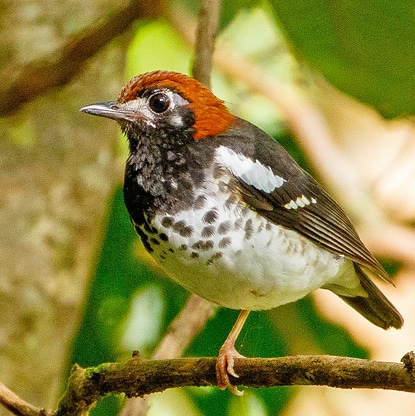
The Lesser Sunda Islands, now known as Nusa Tenggara Islands are an archipelago in the Indonesian archipelago. Most of the Lesser Sunda Islands are located within the Wallacea region, except for the Bali province which is west of the Wallace Line and is within the Sunda Shelf. Together with the Greater Sunda Islands to the west, they make up the Sunda Islands. The islands are part of a volcanic arc, the Sunda Arc, formed by subduction along the Sunda Trench in the Java Sea. Today over 17 million people live on the islands. Etymologically, Nusa Tenggara means ‘Southeast Islands’. The main Lesser Sunda Islands are, from west to east: Bali, Lombok, Sumbawa, Flores, Sumba, Savu, Rote, Timor, Atauro, Alor archipelago, Barat Daya Islands, and Tanimbar Islands. Apart from the eastern half of Timor island and Atauro island which constitute the nation of Timor Leste, all the other islands are part of Indonesia. This page content is confined to Indonesia.
The Lesser Sunda Islands differ from the large islands of Java or Sumatra in consisting of many small islands, sometimes divided by deep oceanic trenches. Movement of flora and fauna between islands is limited, leading to the evolution of a high rate of localised species, most famously the Komodo dragon.
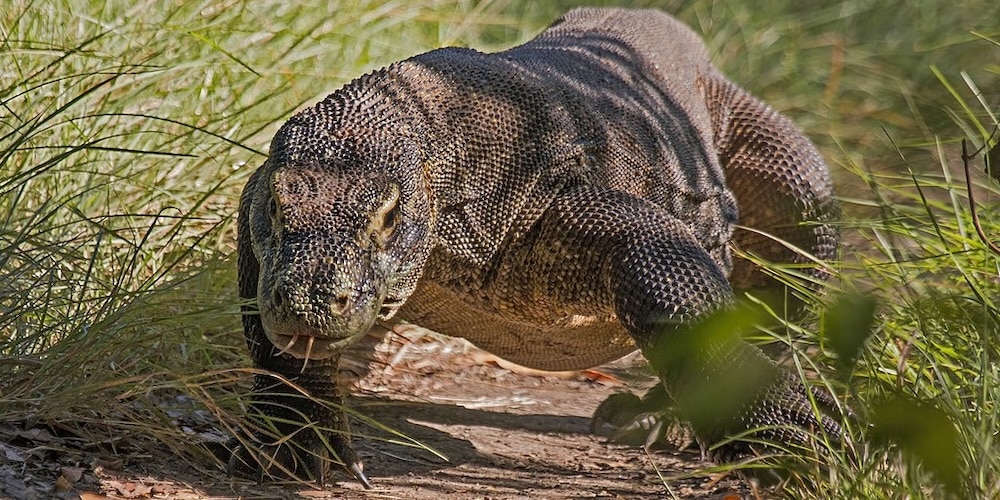
Komodo Dragon Varanus komodoensis – ©Charles J. Sharp CC BY-SA 4.0 via Wikimedia Commons
As described by Alfred Wallace in The Malay Archipelago, the Wallace Line passes between Bali and Lombok, along the deep waters of the Lombok Strait which formed a water barrier even when lower sea levels linked the now-separated islands and landmasses on either side. The islands east of the Lombok Strait are part of Wallacea, and are thus characterised by a blend of wildlife of Asian and Australasian origin in this region. Asian species predominate in the Lesser Sundas: Weber’s Line, which marks the boundary between the parts of Wallacea with mainly Asian and Australasian species respectively, runs to the east of the group. These islands have the driest climate in Indonesia, and tropical dry broadleaf forests are predominant, in contrast to the tropical moist forests that prevail in most of Indonesia.
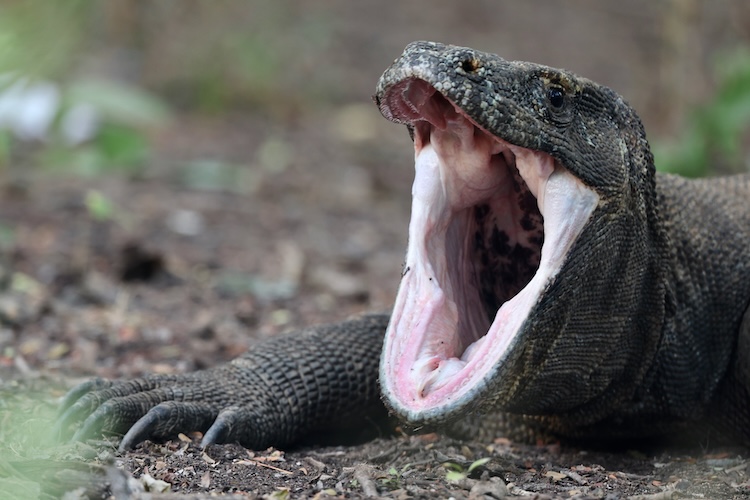
Komodo Dragon Yawn Varanus komodoensis – ©oto-Tours ASIA
The Lesser Sunda Islands are divided among six ecoregions. The Eastern Java-Bali rain forests and Eastern Java-Bali montane rain forests cover Bali, which is the only one of the Lesser Sunda Islands in the Indomalayan realm, and not part of Wallacea. Bali was once attached to the Asian continent and home to large Asiatic mammals like Asian elephants and the extinct Bali tiger. The Lesser Sundas deciduous forests include the northern chain of islands, from Lombok and Sumbawa east to Flores and Alor. The higher slopes of the islands contain forests of tall Podocarpus conifers and Engelhardias with an undergrowth of lianas, epiphytes, and orchids such as Corybas, Corymborkis, and Malaxis (adder’s mouth), while the coastal plains were originally savanna grasses such as the savanna with Borassus flabellifer palm trees on the coasts of Komodo, Rincah and Flores.
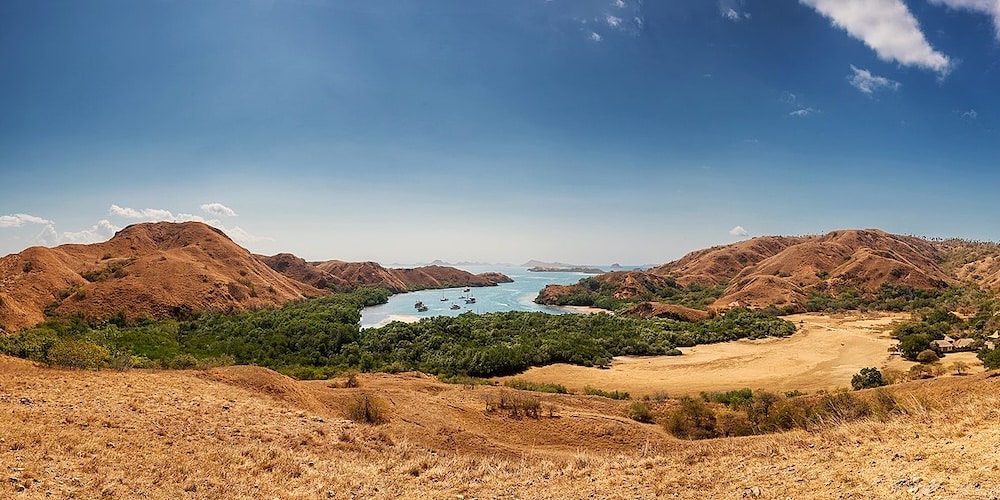
Rincah Island – ©Pambudiyoga CC BY-SA 4.0 via Wikimedia Commons
Although most of the vegetation on these islands is dry forest there are patches of rainforest on these islands too, especially in lowland areas and riverbanks on Komodo, and there is a particular area of dry thorny forest on the southeast coast of Lombok. Thorn trees used to be more common in coastal areas of the islands but have largely been cleared. These islands are home to unique species including seventeen endemic birds (of the c.270 birds found on the islands).
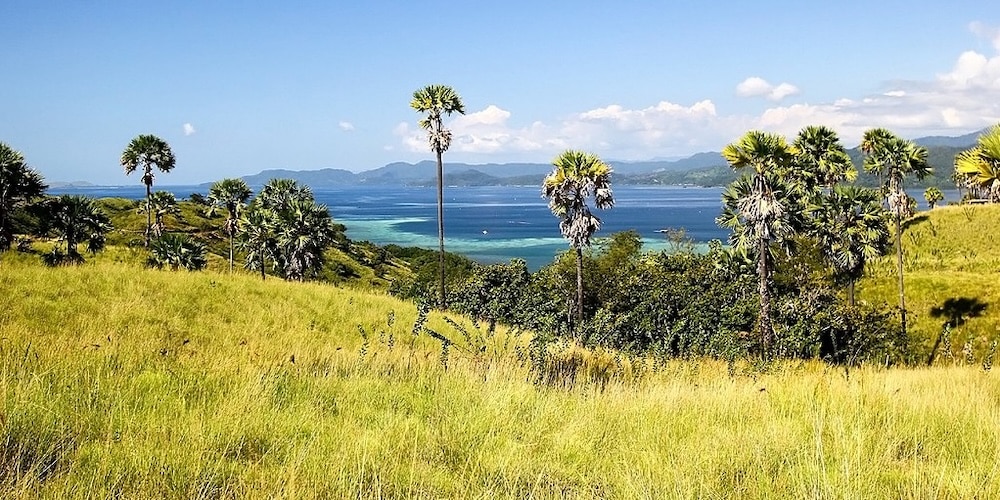
Flores Island – ©Tiket2 CC BY 2.0 via Wikimedia Commons
The endemic mammals are the endangered Flores shrew Suncus mertensi, the vulnerable Komodo rat Komodomys rintjanus, Lombok flying fox Pteropus lombocensis and Sunda long-eared bat Nyctophilus heran, while the carnivorous Komodo dragon, which at three metres long and ninety kilograms in weight is the world’s largest lizard, is found on Komodo, Rincah, Gili Motang, and the coast of northwestern Flores. The Sumba deciduous forests ecoregion includes Sumba. The Timor and Wetar deciduous forests ecoregion includes Timor, Wetar (actually in Maluku Province), Rote, and Savu. The more humid Banda Sea Islands moist deciduous forests ecoregion includes the Barat Daya Islands (except for Wetar), the Tanimbar Islands, and the Kai Islands.
More than half of the original vegetation of the islands has been cleared for planting of rice and other crops, for settlement and by consequent forest fires. Only Sumbawa now contains a large area of intact natural forest, while Komodo, Rincah and Padar are now protected as Komodo National Park.
Birding the Lesser Sundas Islands
Most birding tours visits the six endemic-filled islands; Bali, Sumba, Rote, West Timor, Alor, Flores as well as Komodo for the reptiles. Target species abound such as Sumba Hornbill, Sumba Buttonquail, Cinnamon-banded Kingfisher, Least Boobook, Sumba Boobook, Sumba Eclectus, Citron-crested Cockatoo, Elegant Pitta, Red-naped Fruit Dove, Rote Boobook, Rote Myzomela, Mt Mutis Parrotfinch, Black-breasted Myzomela, Timor Imperial Pigeon, Timor Friarbird, Timor Sparrow, Orange-sided Thrush, Black-banded Flycatcher, Alor Myzomela, Alor Boobook, Flores Hawk-Eagle, Flores Scops Owl, Wallace’s Scops Owl, Chestnut-capped Thrush, Chestnut-backed Thrush, Flores Shortwing, Flores Crow, Flores Monarch, Ornate Pitta, Glittering Kingfisher, Yellow-crested Cockatoo, Sunda Pygmy Woodpecker, and many more, including an exciting range of parrots, fruit doves, sunbirds, and raptors. Komodo Dragons are likely to be a non-avian highlight of any trip.

Beach Thick-knee Esacus magnirostris – ©Bird-Photo-Tours ASIA
Top localities include Camplong Nature Reserve and Bipolo Forest (Timor), Hutan Nostalgia Nature Reserve (Alor), Ruteng Nature Reserve and
Poco Ndeki (Flores), Mengitimbi Lake and the Tanadaru area (Sumba) and Peto Lake (Rote) among others.
-
Flores
Satellite ViewGreat scenery and great birds. The large selection of endemics ranges from the easy to the very hard. -
Komodo
Satellite ViewFamous for giant lizards, but also great for Yellow-crested Cockatoo! -
Lombok
Satellite ViewThe short hop across Wallace's line ensures a trip to Lombok has birds to make it worthwhile. -
Sumba
Satellite ViewEasy roadside birding, beautiful scenery and amazing local culture; and a ton of endemics! -
Timor
Satellite ViewEasy access to some great sites and birds. A trip to Timor is well worthwhile. -
Wetar
Satellite ViewNot an easy place to get to, but anyone who tries it will be rewarded with a selection of endemics that very few people have ever seen.
-
Wikipedia
GNU Free Documentation License
https://en.wikipedia.org/wiki/West_Nusa_Tenggara -
Nick Brickle
Burung-Nusantara / Birds-Indonesia | info@burung-nusantara.org
https://www.facebook.com/BurungNusantara/?locale=id_ID
-
Number of bird species: 655
(As at May 2025)
Number of endemics: 77
Forsten's Megapode Megapodius tenimberensis
Black Cuckoo Dove Turacoena modesta
Wetar Ground Dove Alopecoenas hoedtii
Sumba Green Pigeon Treron teysmannii
Flores Green Pigeon Treron floris
Timor Green Pigeon Treron psittaceus
Timor Imperial Pigeon Ducula cineracea
Red-naped Fruit Dove Ptilinopus dohertyi
Mees's Nightjar Caprimulgus meesi
Invisible Rail Habroptila wallacii
Bald-faced Rail Gymnocrex rosenbergii
Sumba Buttonquail Turnix everetti
Sumba Boobook Ninox rudolfi
Least Boobook Ninox sumbaensis
Flores Scops Owl Otus alfredi
Wallace's Scops Owl Otus silvicola
Sumba Hornbill Rhyticeros everetti
White-rumped Kingfisher Caridonax fulgidus
Cinnamon-banded Kingfisher Todiramphus australasia
Tanimbar Corella Cacatua goffiniana
Jonquil Parrot Aprosmictus jonquillaceus
Iris Lorikeet Psitteuteles iris
Flores Lorikeet Trichoglossus weberi
Wallace's Hanging Parrot Loriculus flosculus
Streaky-breasted Honeyeater Meliphaga reticulata
Crimson-hooded Myzomela Myzomela kuehni
Red-rumped Myzomela Myzomela vulnerata
Scaly-crowned Honeyeater Lichmera lombokia
Flame-eared Honeyeater Lichmera flavicans
Black-necklaced Honeyeater Lichmera notabilis
Timor Friarbird Philemon inornatus
Plain Gerygone Gerygone inornata
Flores Minivet Pericrocotus lansbergei
Sumba Cicadabird Edolisoma dohertyi
White-browed Triller Lalage moesta
Bare-throated Whistler Pachycephala nudigula
Fawn-breasted Whistler Pachycephala orpheus
Timor Figbird Sphecotheres viridis
Wetar Figbird Sphecotheres hypoleucus
Olive-brown Oriole Oriolus melanotis
Cinnamon-tailed Fantail Rhipidura fuscorufa
Brown-capped Fantail Rhipidura diluta
Long-tailed Fantail Rhipidura opistherythra
Flores Crow Corvus florensis
Black-bibbed Monarch Symposiachrus mundus
Flores Monarch Symposiachrus sacerdotum
Golden-bellied Robin Microeca hemixantha
Golden-rumped Flowerpecker Dicaeum annae
Black-fronted Flowerpecker Dicaeum igniferum
Apricot-breasted Sunbird Cinnyris buettikoferi
Flame-breasted Sunbird Cinnyris solaris
Five-coloured Munia Lonchura quinticolor
Timor Sparrow Lonchura fuscata
Tricolour Parrotfinch Erythrura tricolor
Buff-banded Grassbird Buettikoferella bivittata
Timor Leaf Warbler Seicercus presbytes
Russet-capped Tesia Tesia everetti
Timor Stubtail Urosphena subulata
Yellow-browed White-eye Heleia superciliaris
Yellow-spectacled White-eye Heleia wallacei
Crested White-eye Heleia dohertyi
Spot-breasted White-eye Heleia muelleri
Thick-billed White-eye Heleia crassirostris
Bali Myna Leucopsar rothschildi
Tanimbar Starling Aplonis crassa
Sumba Brown Flycatcher Muscicapa segregrata
Timor Blue Flycatcher Cyornis hyacinthinus
Flores Jungle Flycatcher Eumyias oscillans
Sumba Jungle Flycatcher Eumyias stresemanni
Damar Flycatcher Ficedula henrici
Sumba Flycatcher Ficedula harterti
Black-banded Flycatcher Ficedula timorensis
White-bellied Bush Chat Saxicola gutturalis
Fawn-breasted Thrush Zoothera machiki
Slaty-backed Thrush Geokichla schistacea
Orange-sided Thrush Geokichla peronii
Chestnut-backed Thrush Geokichla dohertyi
-
Avibase
PDF ChecklistThis checklist includes all bird species found in Lesser Sunda , based on the best information available at this time. It is based on a wide variety of sources that I collated over many years. I am pleased to offer these checklists as a service to birdwatchers. If you find any error, please do not hesitate to report them. -
E-Bird
PDF ChecklistThis checklist is generated with data from eBird (ebird.org), a global database of bird sightings from birders like you. If you enjoy this checklist, please consider contributing your sightings to eBird. It is 100% free to take part, and your observations will help support birders, researchers, and conservationists worldwide.
-
A Guide to the Birds of Wallacea
| (Sulawesi, The Moluccas and Lesser Sunda Islands, Indonesia) | By Brian J Coates, K David Bishop & Dana Gardner | Dove Publications | 1997 | Hardback | 535 pages, 64 colour plates [697 species], colour photos, maps, illustrations | Out of Print | ISBN: 9780959025736 Buy this book from NHBS.com -
A Photographic Guide to the Birds of Indonesia
| By Morten Strange | Tuttle Publishing | 2025 | Edition 2 | Paperback | 544 pages, 920 colour photos, colour distribution maps | ISBN: 9780804858397 Buy this book from NHBS.com -
Birds of the Indonesian Archipelago - Greater Sundas and Wallacea
| By James A Eaton, Bas van Balen, Nick W Brickle & Frank E Rheindt | Lynx Edicions | 2021 | Edition 2 | Flexibound | 536 pages, 2800+ colour illustrations, 1350 colour distribution maps | ISBN: 9788416728442 Buy this book from NHBS.com -
Birds of the Philippines, Sumatra, Java, Bali, Borneo, Sulawesi, the Lesser Sundas and the Moluccas
| By Norman Arlott | William Collins (Harper Collins imprint) | 2018 | Hardback | 416 pages, 179 plates with colour illustrations; colour distribution maps | ISBN: 9780008102395 Buy this book from NHBS.com
-
NP Kelimutu
InformationSatellite ViewThe park is located on the island of Flores. It consists of a region with hills and mountains, with Mount Kelibara (1,731 m) as its highest peak. Mount Kelimutu, which has the three coloured lakes. -
NP Komodo
InformationSatellite ViewThe park includes the three larger islands Komodo, Padar and Rinca, and 26 smaller ones, with a total area of 1,733 km2 (603 km2 of it land). The national park was founded in 1980 to protect the Komodo dragon, the world's largest lizard. Later it was dedicated to protecting other species, including marine species. -
NP Laiwangi Wanggameti
InformationSatellite ViewIt is is located on the island of Sumba in Indonesia. All forests types that exist on this island can be found in this national park. Birds include red junglefowl, red-naped fruit-dove, Sumba green pigeon, Sumba buttonquail, citron-crested cockatoo, purple-naped lory, Sumba flycatcher, Sumba cicadabird, and apricot-breasted sunbird. -
NP Manupeu Tanah Daru
InformationSatellite ViewIt is located on the island of Sumba. This national park consists lowland forests on steep slopes that rise up to ca. 600m. There are around 87 species of birds protected in this region, including a number of endemics such as yellow-crested cockatoo, Sumba green pigeon, Sumba flycatcher, Sumba cicadabird, apricot-breasted sunbird and Sumba hornbill. -
NP Mount Rinjani
InformationSatellite ViewBirds include scaly-crowned honeyeater etc. -
NR Mount Tambora
InformationSatellite ViewMount Tambora, also known as Tomboro, is situated in the northern part of Sumbawa island. It is a segment of the Sunda Arc, a string of volcanic islands that make up the southern chain of the Indonesian archipelago. Tambora forms its own peninsula on Sumbawa, known as the Sanggar peninsula. To the north of the peninsula is the Flores Sea and to the south is the 86 kilometres (53 mi) long and 36 kilometres (22 mi) wide Saleh Bay. At the mouth of Saleh Bay there is an islet called Mojo. An 1896 survey records 56 species of birds including the crested white-eye. Several other zoological surveys followed and found other bird species, with over 90 bird species discoveries in this period, including yellow-crested cockatoos, Zoothera thrushes, Hill mynas, green junglefowl and rainbow lorikeets are hunted for the cagebird trade by the local people. Orange-footed scrubfowl are hunted for food. This bird exploitation has resulted in population declines, and the yellow-crested cockatoo is nearing extinction on Sumbawa island.
-
eBird
SightingseBirding This Month
-
Bali Birding Tour
Local Tour OperatorLesser Sundas Birding Trip -
Bird Photo Tours ASIA
Tour OperatorBird-Photo-Tours Asia’ 21-day bird photography workshop takes in six of the Lesser Sunda Islands, namely Lombok, Sumba, West Timor, Rote, Flores and Komodo offering the chance for close photographic encounters with numerous endemics across some fabulous families of birds including Scrubfowl, Pittas, Tropicbirds, Kingfishers, Lorikeets, Parrots, Trillers, Friarbirds, Honeyeaters, Orioles, Hornbills, Owls, Flycatchers, Myzomelas and Whistlers. -
BirdFinders
Tour OperatorThis fabulous tour will take us to four of the islands making up this rarely-visited part of Indonesia. -
BirdQuest
Tour OperatorIsland-hopping for endemics and Komodo Dragons in the Nusa Tenggara -
Birding Ecotours
Tour OperatorBirding Tour Indonesia: The Lesser Sunda Islands– Comprehensive Tour. -
Birding Indonesia
Local Tour OperatorExpected to see many Indonesian endemic bird species such as Bali starling, Javan banded pitta, Green junglefowl, Indonesian honey eater and also the remaining ancient creature; KOMODO. -
Birdtour Asia
Tour OperatorSumba, Timor, Rote, Flores and Komodo -
Malia Birding
Local Tour OperatorMalia Birding is a department under Malia Tours specializing in handling birding trips in Sulawesi, Halmahera, and beyond. -
Pitta Nature Tours
Tour OperatorThe remote Indonesian islands of Sumba, Rote, Timor, and Flores—the Lesser Sundas, are home to nearly 90 endemic species of birds. Along with a day trip to see Komodo Dragons, and several days birding on Bali this is a tour you won’t soon forget. -
Rockjumper
Tour OperatorIndonesia - Lesser Sundas Endemics -
Vacation Indonesia Tours
Tour OperatorVacation Indonesia Tours, owned by Nurlin Djuni & Darwin Sumang, is your gateway to Indonesia. We can immerse you in our culture, heritage and our extraordinarily diverse natural history. The Islands of Indonesia are justly famous for birdwatching. Over 372 species have been recorded and many are found nowhere else. Nurlin Djuni specialises in Birdwatching/Holidays Tours in Sulawesi, Halmahera, Papua, Java, Bali, Kalimantan, Lesser Sundas and Sumatera… -
Ventures Birding
Tour OperatorVenture to Indonesia’s Lesser Sunda Islands -
Victor Emanuel Nature Tours
Tour OperatorA fascinating but less explored region of Indonesia, the Lesser Sundas Archipelago features several islands key for avian diversity and endemism including Sumba, Timor, Flores, and Komodo, presenting an opportunity to see a variety of birds not available on our Indonesia Highlights tour. -
WINGS
Tour OperatorIndonesia: The Lesser Sunda Islands Sumba, Timor and Flores -
Wallacea Bird Tour
Local Tour OperatorThe Lesser Sunda Islands, located in Indonesia, exhibit a notable avifauna diversity across their diverse ecosystems. These islands, including Bali, Lombok, Flores, Rote, Alor, and Timor, are home to a wide range of bird species.
-
2017 [07 July] - Zoothera
PDF ReportOnce again our Lesser Sundas tour provided a fantastic opportunity to see over 90 Indonesian endemics, including some of the most localized and range-restricted species on the planet... -
2018 [10 October] - Mike Nelson
PDF Report...Further night birding also got us wonderful looks at a pair of Greater Sumba Boobooksperched high and peering down at usand the screams of Barn Owlled us to the local sumbae subspecies of this night hunter. Having cleaned up on Sumba we happily headed offto Rote for a new flight of endemics.... -
2019 [09 September] - Mike Nelson
PDF ReportThe Indonesian archipelago is home to just over 600 endemics and within Wallacea itself there are roughly around 265, over 40% of the close to 700 species recorded, and this number continues to grow with the ever-changing taxonomic picture. It is for this reason that the Lesser Sundas are such a magnet for birders and this year’s tour was filled with many of those endemics. Of the 230 species we recorded 77 are endemic with three heard only... -
2022 [06 June] - Andrew Walker
PDF ReportThe list of highlights was very long and included Flores Scops Owl, Sumba Boobook, Little Sumba Hawk-Owl, Rote Boobook, Timor Boobook, Flores Hawk-Eagle, Sumba Hornbill, Yellow-crested Cockatoo, Elegant Pitta, Ornate Pitta, Red-naped Fruit Dove, Timor Imperial Pigeon, Timor Cuckoo-Dove, Bare-throated Whistler, Buff-banded Thicketbird, Flores Monarch, Little (Flores) Minivet, Rote Leaf Warbler, Timor Leaf Warbler, Flores Leaf Warbler, White-browed (Flores) Shortwing, Black-banded Flycatcher, Timor Blue Flycatcher, Sumba Myzomela, Rote Myzomela, Black-breasted (Timor) Myzomela, Alor Myzomela, and Timor Sparrow. Non-avian highlight was easily Komodo Dragon! -
2023 [07 July] - Roland van der Vliet
PDF ReportHaving birded Sumatra, Java and Bali before in 2004, I specifically targetted some bird species I had missed, including some taxa that only occurred or were perhaps more easily seen in eastern Java. I had never visited the Lesser Sundas so here, on Flores, much more would be new for me. To achieve this, I asked for help by two renowned birding guides: Hery Kusumanegara in eastern Java and Bali, and Yovie Jehabut on Flores. -
2023 [08 August] - Craig Robson
PDF ReportOur first Birdquest to The Lesser Sundas for six years was a great success, with more than 100 taxonomy-dependant Tenggaran endemics amongst our healthy trip total of 249 species. There was no birding on Bali this time, apart from at the airport. Some of the top highlights this year included Timor Nightjar, Timor, Eucalypt and Black Cuckoo-Doves, Flores Green Pigeon, Red-naped Fruit Dove, Timor Imperial Pigeon, Sumba, Rote, Timor and Least Boobooks, Flores Scops Owl, Sumba Hornbill, White-rumped and Cinnamon-banded Kingfishers, Yellow- and Citron-crested Cockatoos, Sumba Eclectus, Iris, Olive-headed, Marigold and Leaf Lorikeets, Wallace’s Hanging Parrot, excellent perched views of both Ornate and Elegant Pittas, Sumba, Rote and Black-breasted Myzomelas, Flame-eared Honeyeater, Little Minivet, the vocally wellendowed Bare-throated Whistler, Brown-capped, “Rote”, “Timor” and “Supertramp” Fantails, Flores Monarch, Flores Crow, Russet-capped Tesia, Timor Stubtail, Flores, Timor and Rote Leaf Warblers, Buff-banded Thicketbird, 5 endemic Heleias, Orange-sided, Chestnut-capped and Chestnut-backed Thrushes, Flores Shortwing, Black-banded Flycatcher, White-bellied Bush Chat, all 7 endemic flowerpeckers (taxonomy-dependant), Apricot- and Flame-breasted Sunbirds, both Tricolored and the recently discovered Mount Mutis Parrotfinch (including adult males), and Timor Sparrow. -
2023 [08 August] - Glen Valentine
PDF ReportFlores Endemics & Komodo (Tailor-made) -
2024 [08 August] - Dáni Balla
PDF ReportBirdquest’s highly successful tours to the Nusa Tenggara region of Indonesia was continued this year with all possible endemic bird species seen. We recorded 234 bird species during a 19-day long tour while visiting the islands of Sumba, Timor, Rote, Flores and Komodo... -
2024 [10 October] - Peg Abbott
PDF ReportFlores & Komodo Island -
2025 [07 July] - Bird-Photo-Tours
ReportThis trip report showcases many of the photographic portraits from this Bird-Photo-Tour to Indonesia's Lesser Sundas, with an itinerary that focussed on the photography of many of the endemic birds of these fabulous islands.
-
Nihiwatu - Sumba
AccommodationWhere untamed luxury embraces boundless freedom. Sumba Island, just a short flight from Bali’s bustling tourism hub and over twice its size, is a sanctuary for those seeking connection to something greater.


